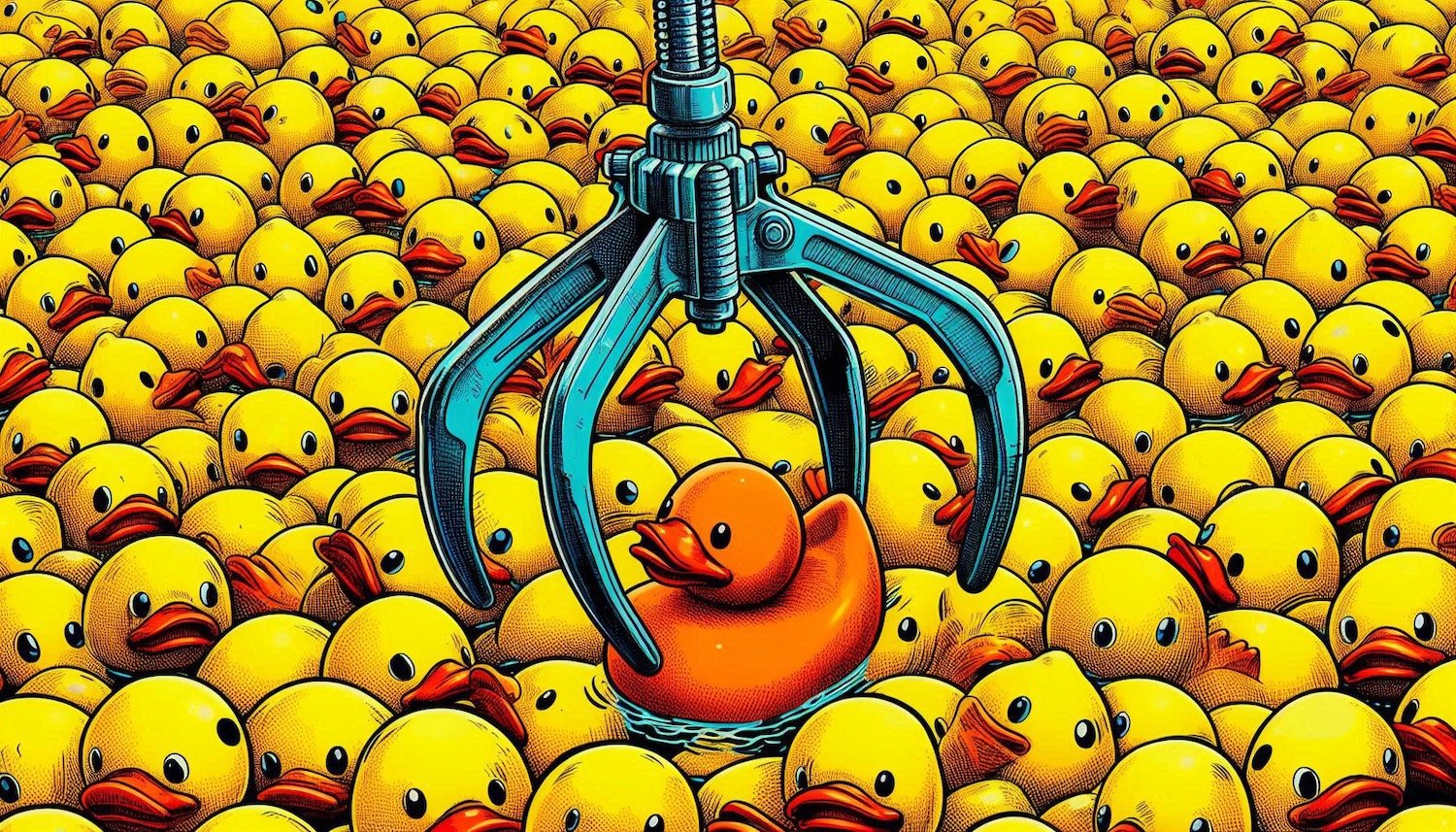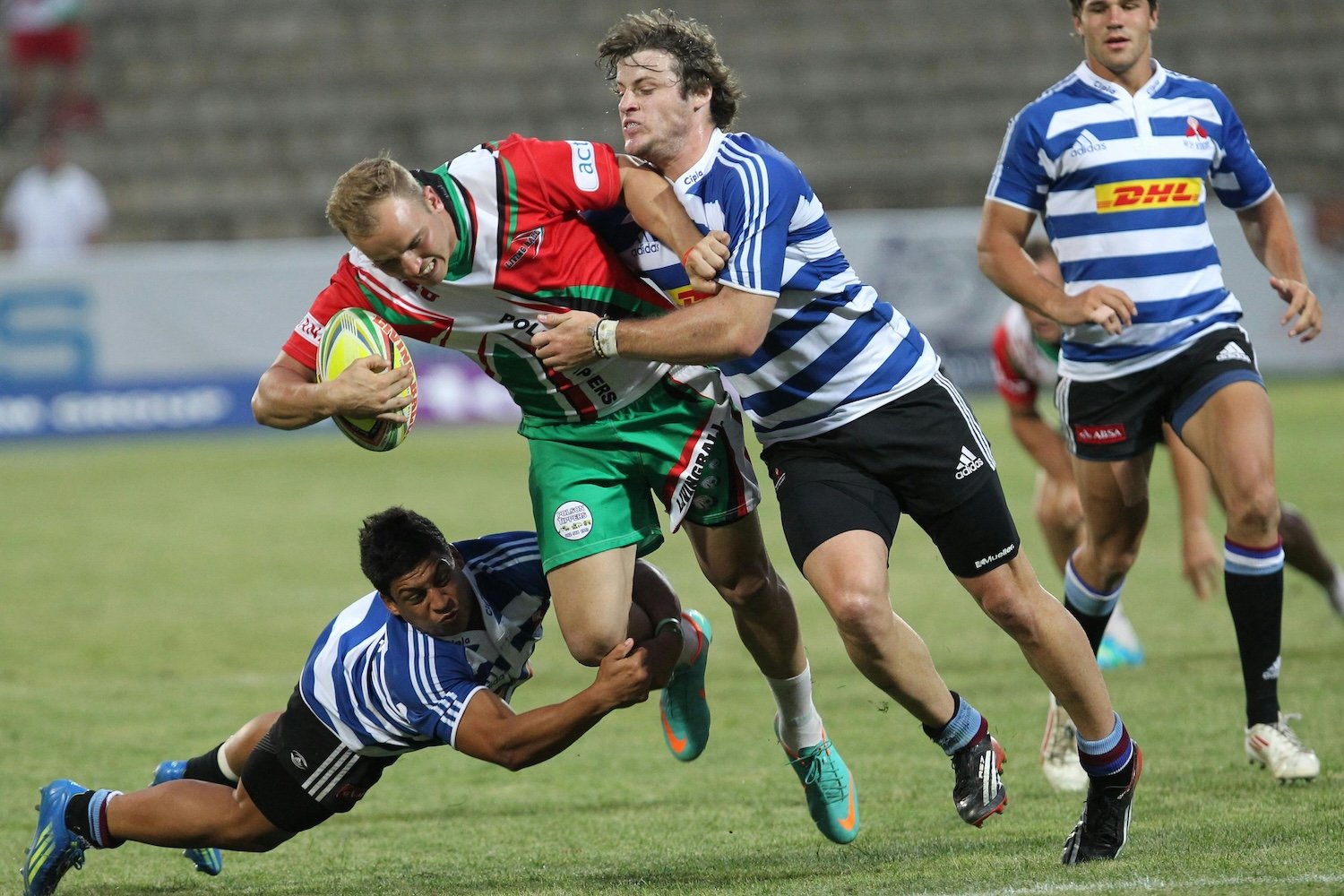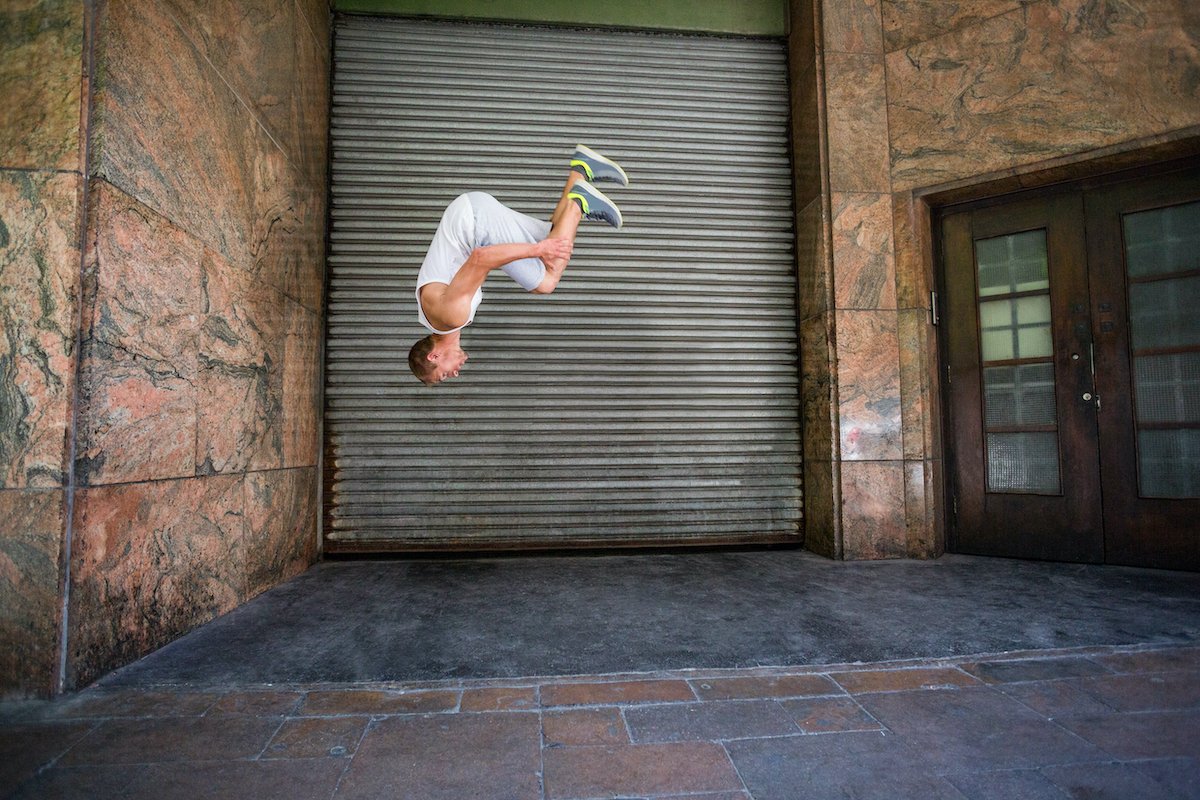Escape the ‘Sea of Same’
How to Win the Fight Against Blending In

In Scale-Ups and Enterprise, there’s a silent killer of innovation, the “sea of same.”
It’s the point at which entire industries start to look, sound, and feel indistinguishable from one another. Sleek websites, minimalist logos, tired mission statements, they all start blending into a single, forgettable, bland blur. And if you’re not careful, your brand can sink in it too.
What causes the sea of same?
It usually starts with best practice overload. Brands look to market leaders for inspiration, and before long, everyone is borrowing from the same style guides, stock photo libraries, and brand templates. SaaS companies all use similar pastel gradients and geometric icons. Defence firms lean on light greys and sans serif type. Space tech ventures mimic NASA and SpaceX. Without knowing it, companies drift into sameness in the name of safety.
But the irony is, playing it safe is what makes your brand invisible.
At Hiatus, we work with organisations in complex, high-stakes sectors like defence, space, cybersecurity, and dual-use innovation. These industries face their own pressures: the need for trust, clarity, and compliance. But that doesn’t mean creativity is off the table, in fact, it’s more important than ever.
To stay afloat in the sea of same, here’s what we recommend:
1. Start with strategy, not aesthetics
Design should never be decoration. It should be rooted in what makes your company different, your mission, mindset, and market. If you’re just mimicking what others have done, you're already behind.
2. Dare to say something real
Most websites are packed with vague phrases like “cutting-edge solutions” or “tailored services.” Instead, say something that only your company could say. Use plain language. Speak with clarity. Be bold enough to have a point of view.
3. Design for your operators
Your users are often not marketing people, they’re engineers, mission planners, procurement teams, or frontline operators.
Good design meets them where they are. It should be fast, readable, and stripped of fluff.
4. Don’t be afraid of difference
Brands that stand out often do so because they break one or two conventions, a striking colour, an unexpected tone of voice, or a radically simplified layout. That moment of surprise is what makes people remember you.
5. Refresh regularly
Digital fatigue is real. The internet never stands still. If your website or product design hasn’t been updated in 3–4 years, you might already be fading into the background. Don’t wait for it to become a problem.
The sea of same isn’t just a design issue, it’s a business risk. If your customers can’t tell you apart from the rest, why would they choose you?
At Hiatus, we design for clarity, impact, and difference. If you’re building something important, it deserves to be seen.
Most websites don’t fail because the product is bad. They fail because the visitor lands, looks around, and thinks, “What the hell do I do next.”
That moment is often the result of choice overload. Too much text, too many buttons, too many pages, too many “priorities” all shouting at once.
This is where Hick’s Law comes in.
When was the last time you truly looked at your website as someone visiting for the first time?
It’s easy to forget that what feels intuitive to you might feel confusing, slow, or even frustrating to someone else. That’s where a usability audit comes in.
Your website isn’t just a digital shopfront, it’s your best salesperson.
It works 24/7, never takes a holiday, and shapes your customer’s first impression long before they speak to you.
When attention spans are short and options are endless, your site has just a few seconds to make someone feel they’ve come to the right place.
When visitors land on your website, you have less than five seconds to make a good impression.
In that tiny window, they’ll decide whether to stay or go.
And the first thing they read, is your hero tagline, that tells people who you are, what you do, and why they should care. If it’s vague, full of jargon, or simply missing, you’re wasting prime digital real estate.
When it comes to website security, everything valuable stays locked inside, with clear rules on who can enter and when. But just like with real fences, it’s the gaps, the loose panels, rusted locks, and overlooked corners, that become entry points for trouble.
A powerful planning concept our founders learned whilst serving in elite units of the British military, red teaming is a practice used to challenge assumptions, stress-test plans, and uncover vulnerabilities before they’re exploited.
Originally formulated by Robert Metcalfe to describe the impact of networking in telecommunications, Metcalfe’s Law states that the value of a network is proportional to the square of the number of connected users. But in the 21st century, the principle has since been applied to social media, digital platforms, and even websites.
You may not realise it, but at the core of your website and brand is a 'design system,' a method of understanding that helps to harness principles like the Aesthetic-Usability Effect, Jakob's Law, Law of Least Mental Effort, Law of Similarity, Serial Position Effect, and the Von Restorff Effect.
In this article, we’ll delve deeper into how these psychological and neurological phenomena intersect with design systems, reshaping the landscape of your website and brand experiences.
In cognitive psychology, "chunking" refers to the process of breaking down information into smaller, more manageable units – so that they can be recalled quicker.
This concept has significant implications for website design and user experience (UX), as it directly impacts how visitors perceive and interact with your online content.
“One of the most common pitfalls we've observed is the indiscriminate dumping of text onto the website without proper consideration for its relevance or impact.”
If you didn’t realise, your website is the digital storefront of your brand, the virtual gateway through which potential customers interact with your business.
It's a powerful tool for conveying your brand message, generating leads, and driving conversions. However, entrusting the user experience design of your website to lazy or inexperienced marketers can have disastrous consequences.
At its core, choice architecture uses principles from behavioural economics and social psychology to nudge users towards making decisions that align with their goals and preferences.
By strategically structuring options and information, we can guide users towards desired actions and outcomes, ultimately enhancing the effectiveness and usability of your website.
Designing a colour palette for a website is a crucial aspect of creating a visually appealing and cohesive brand experience.
One effective approach to achieving balance and harmony in colour selection is the 60/30/10 rule. This rule dictates that 60% of the colour scheme should be the main colour, 30% the secondary colour, and 10% the accent colour. Here's a detailed guide on how to implement this rule effectively:
In the ever-evolving realm of digital design, the concept of skeuomorphism has emerged as a key principle shaping user experiences. But what exactly is skeuomorphism, and how should it influence your approach to crafting digital interfaces?
In the world of branding and design, making your product or message stand out is a perpetual challenge.
The Von Restorff Effect, also known as the Isolation Effect, is a psychological principle that can be a game-changer for brands seeking to capture the attention of their audience. This intriguing phenomenon offers insights into human cognition and memory, making it a powerful tool for marketers and designers alike.
But how does it help develop your brand? Here’s our thoughts:
Traditionally, brand ambassadors were often high-profile celebrities or influencers, but a new paradigm has emerged. Your own staff, the people who work behind the scenes, are now recognised as some of the most powerful and authentic brand ambassadors a company can have.
When you think about it, it makes perfect sense. Your employees are the heart and soul of your organisation. They interact with customers, collaborate with partners, and shape the culture of your company.
Building a compelling website is crucial for an ocean rowing team embarking on a 3000-mile journey across the Atlantic. By choosing a memorable domain name, selecting a suitable platform like Squarespace, customising the design, creating essential pages, sharing expedition information, maintaining an active blog, integrating social media, implementing donation options, optimising for SEO, testing and refining, promoting the website, and tracking analytics, the team can engage their audience, attract sponsors, and provide a central hub for updates and information. Ultimately, a well-managed website reflects the spirit and goals of the expedition, ensuring its success and impact.
About the Author:
Chris is the founder of Hiatus.Design, a mission-driven branding and website design company that works with clients all over the world.
Over the course of his life, he has travelled to more than 60 countries across six continents, earned two Guinness World Records, completed the legendary Marathon des Sables, summited Mont Blanc and unclimbed peaks in Asia, become a Fellow of the Royal Geographical Society (FRGS), rowed across the Atlantic Ocean and obtained a Masterʼs degree in Business Management (MA).















